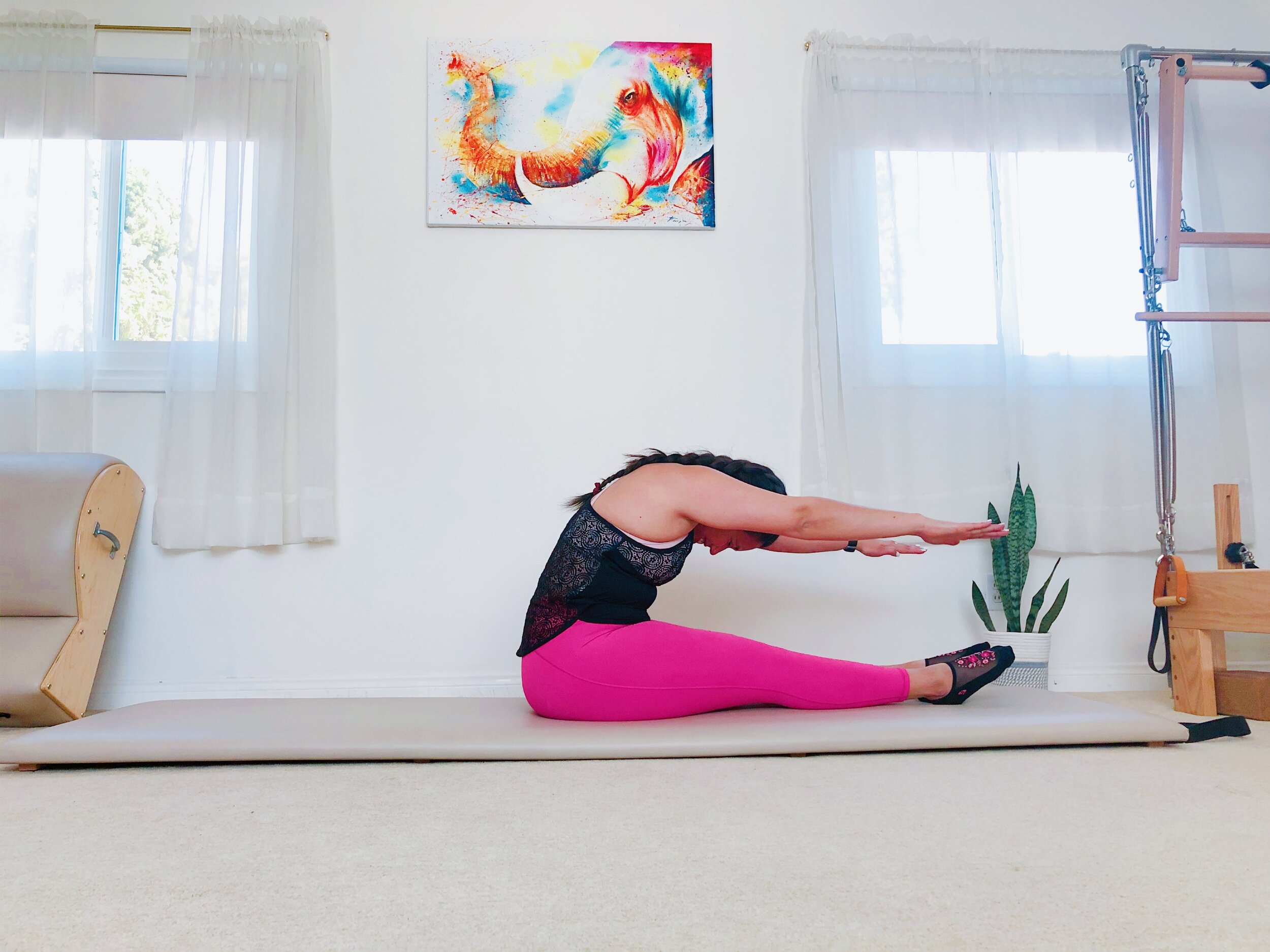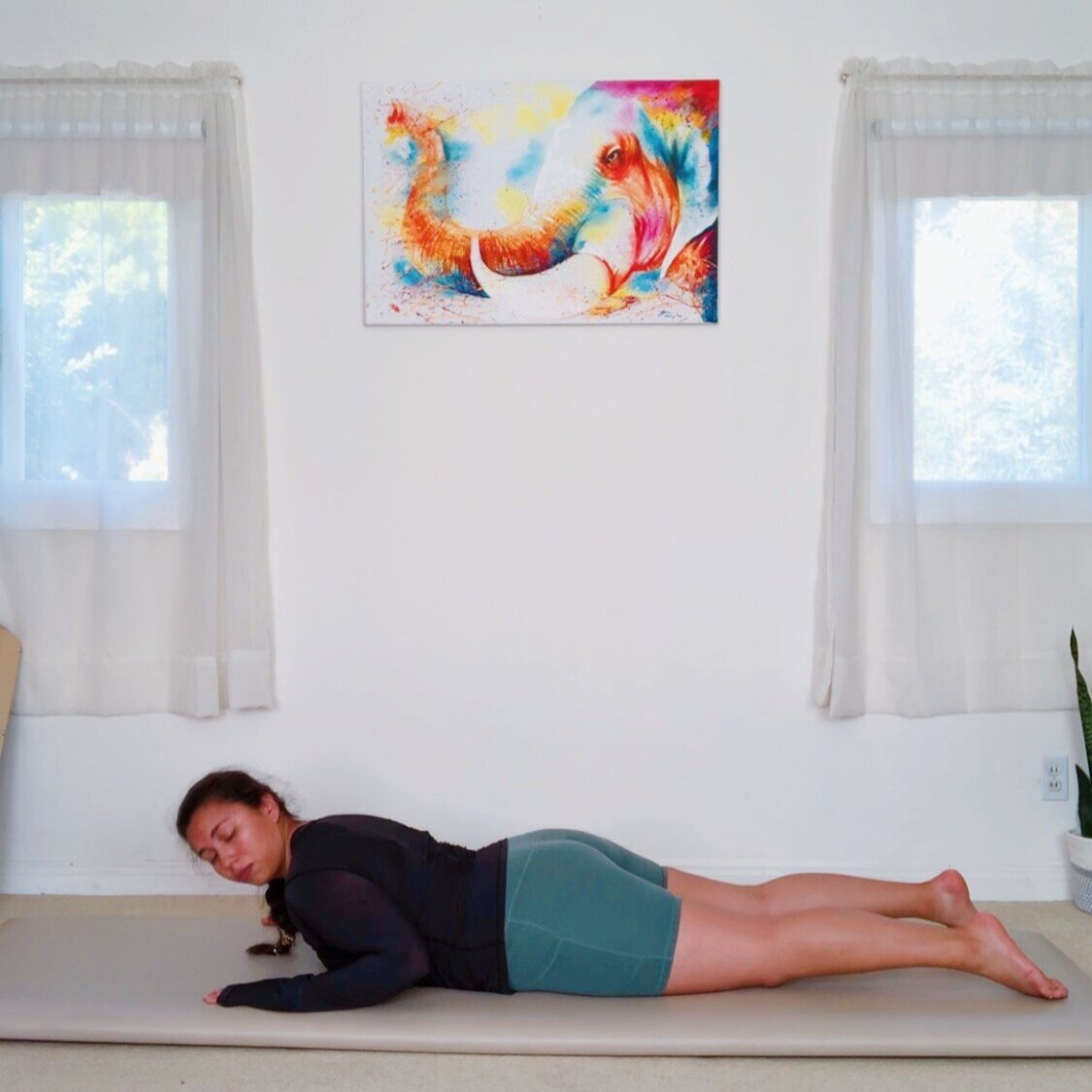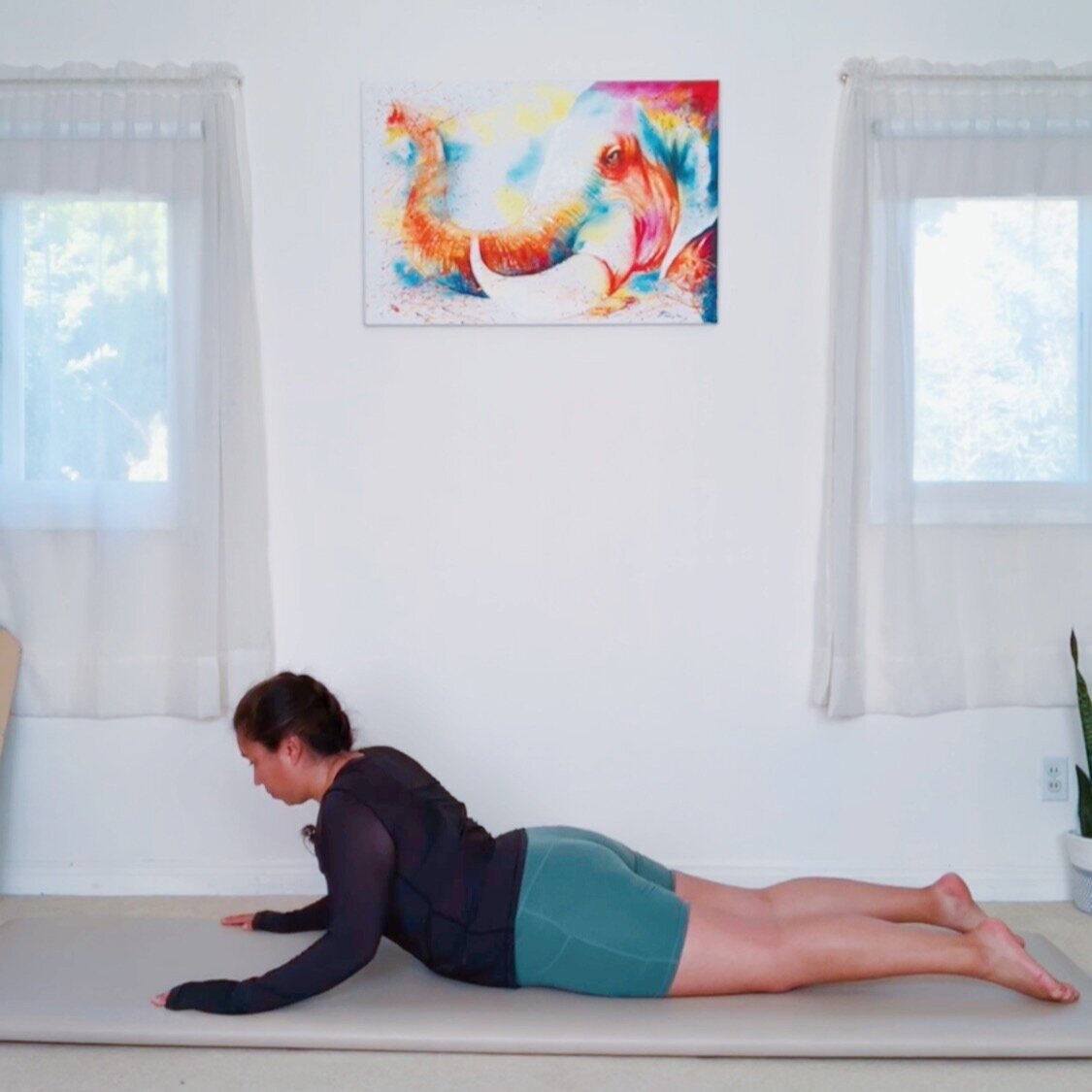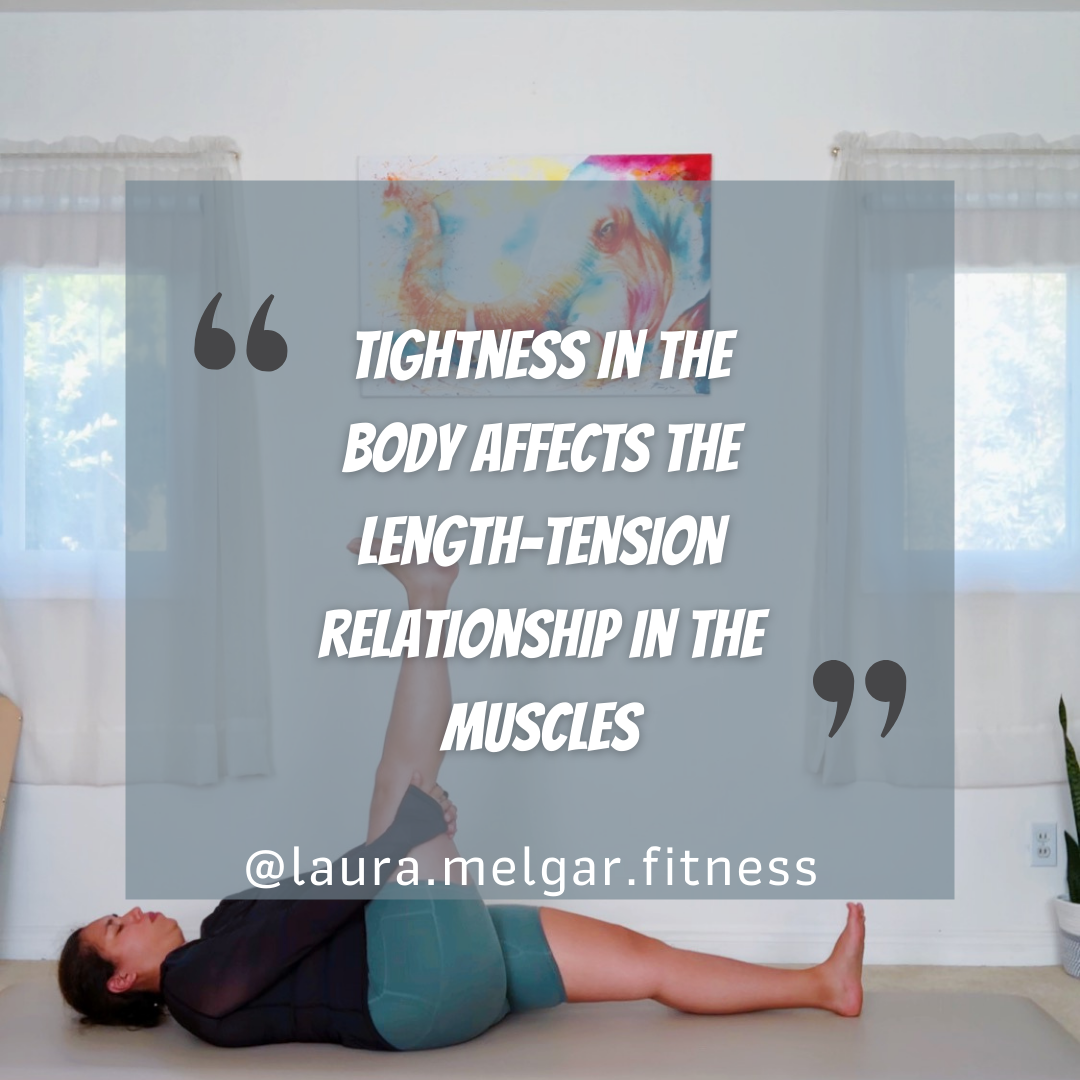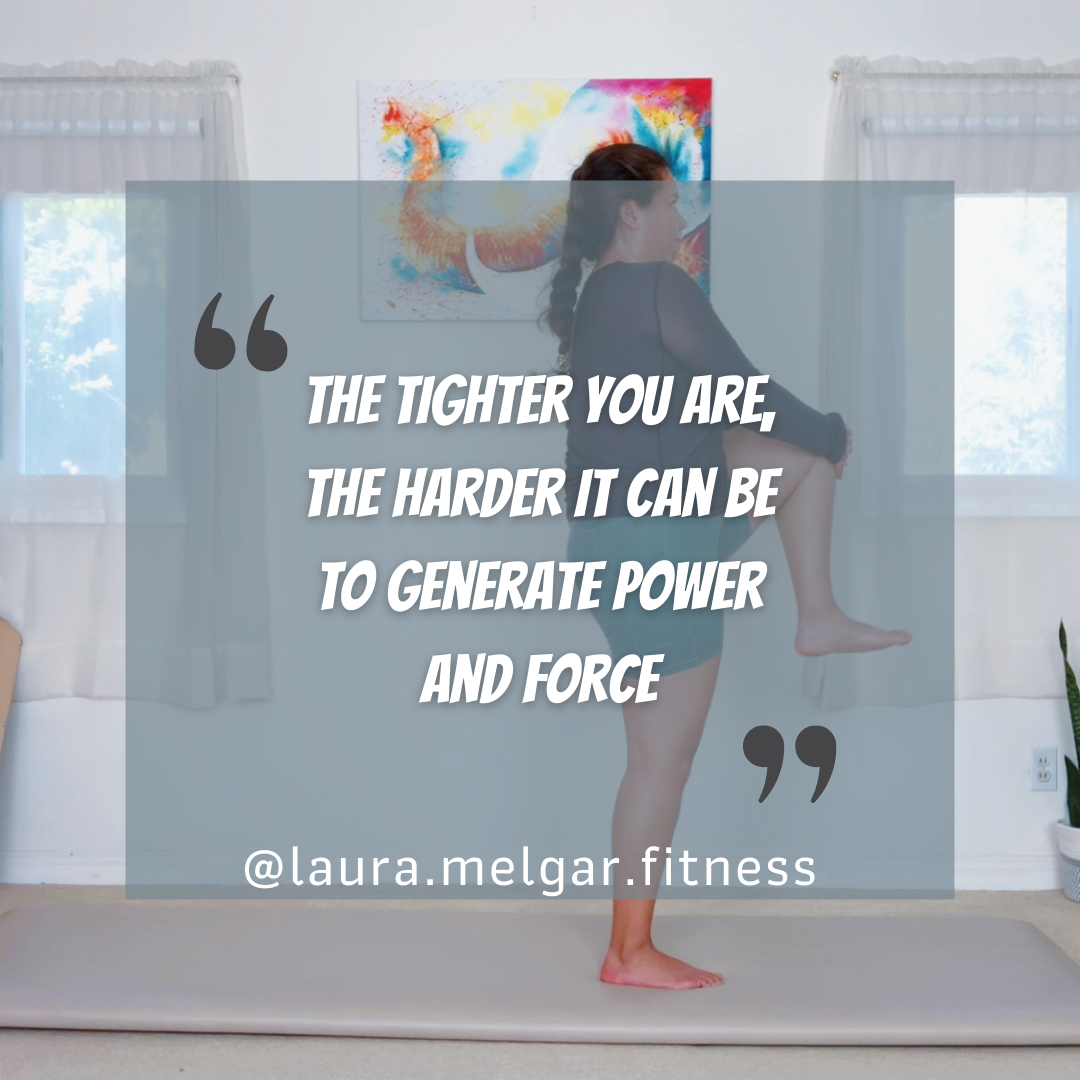Recovery Flow for Runners
As someone that has had hip surgery I get how recovering from an injury can be frustrating and leave a hint of fear that injury related pain will pop up during a race. I also understand how tempting it can be to rush the process to get back the time and distance from before and emphasize mileage & speed. It is for this exact reason that I highly emphasize making recovery just as much of a priority.
This routine will help you flush out soreness and recover after your long runs and also makes a great flow as an active recovery day. Find the video below and keep reading to find a breakdown of each exercise in this routine.
I left my last half marathon feeling good and have been pleasantly surprised with how quickly I was able to bounce back from it. During the 12 weeks leading up to my race I was diligent about following a program that I wrote out beforehand incorporating several changes from my first race. I feel like these changes helped me go into my race feeling strong and also led to me recovering faster afterwards.
In comparison to my 1st half marathon in 2020 I felt less overall soreness following the completion of the AFC half marathon I just completed. I also remember that during the Carlsbad half marathon I started having SI pain around mile 10. This SI/low back pain was nowhere to be seen during my AFC half marathon I finished in August. The most noticeable difference I made in this training cycle was emphasizing my Pilates training over strength training to focus on recovery after my runs. Don’t get me wrong, I still did lift and strength training with dumbbells. Overall, I am really happy with how my body held up and how strong it felt.
Throughout all 13.1 miles:
I went without a negative thought about my hip
I didn’t have any hip pain or referred low back pain throughout the run
I didn’t have any pain following the run in my hip or back
Here is a sample of one of my Pilates routines that I used throughout my training. Click here to download a copy of the routine and save on your device!
The Roll Up
It’s one that I find people can sometimes struggle with but to be fair there’s a lot going on with it. It’s not just about what needs to be strong to bring you up, it’s also about what needs to be loose and mobile. That’s why I like it for my running clients, especially those that have low back tightness, and why I like it after a long, challenging run.
Laying on the floor there is a glorious oppositional stretch that helps the front body open. After my long runs I love the stretch I feel through the front of my hips and it also just feels good to start laying down.
A common thing I see here is people trying to reach their hands down to the floor. Instead think the fingertips try to reach opposite of your toes. If you were standing you would be reaching for the sky. When you roll up and forward that opposition stretch appears again. Since my hip surgery my right QL tends to get tight. I prefer to keep my hands parallel to the ground here to emphasize a low back stretch.
Think hands reach on the horizon to the wall in front of you as your belly tries to pull just as equally backwards to find that stretch. It’ll change it from being just a hamstring stretch to being an entire posterior chain stretch.
All in all if you are a runner that struggles with low back pain, this is for you.
Single Leg Circle Prep
If you are experiencing tightness in your hamstrings which doesn’t seem to be muscular, it could be your nerves restricting the range of motion. Enter this single leg circle prep. In the kicking action of the hamstring stretch we are elongating our nerves with a hamstring floss.
To do the hamstring floss place your hands on the backside of your thigh bone (your femur) and try to keep that bone from moving. From here stretch the leg up to the sky and back for about 6-8x. Keep the stretch here comfortable. We are not trying to push it, nerve flossing shouldn’t be painful. If you start to feel pain, stop.
Also shown in the recovery flow video are an IT band stretch & inner thigh stretch. Common things I see here as the leg starts to move across and away from the body are the shoulders leaving the floor or the grounded leg bending. Try to keep what is touching the ground, continue to touch the ground.
Standing Single Leg stretch
Have you ever heard of the Pilates series of 5? It’s one of my favorite core series to teach as well as play with the traditional exercises. This standing variation is one of those “play” options that I love for runners.
It challenges balance and stability through the ankle
The grounded leg pushes into the earth to sneakily activate glutes
The sneaky activation of the glutes stretches the hip flexor
The leg that pulls up from the floor works the lower abdominals to strength the core
When we strengthen the core we help support our back and pelvis
The deep hip flexion and pull of the bent knee stretch the lower back
It’s a unilateral exercise which mimics a running pattern so we are strengthening in a movement pattern we need for our activity
I just also love unilateral exercises in general for core strength, sling strength, antirotation strength.
Feel your whole footprint into the earth, think the entire outer edge not just the heel. As you lift one leg up, think the power comes from your lower abdominals. Grab either the front of the shin or underneath the knee to give it a hug towards your shoulder. As you balance on the standing leg, really push it down into the ground as your head reaches in the opposite direction-that’s what activates your glutes to give you a hip opening in the front.
Try that low belly activation right now in a seated position. Think about your navel pulling inward as if you were trying to button the top button of your jeans. Notice how that action gives a mild stretch in the lower back as well as activating your transverse abdominis. That same work happens as you lift the leg here in this exercise.
Spine Stretch Forward
Once again we are working on flexibility and mobility. This one is called SPINE STRETCH forward so if you are someone that has tight hamstrings I would recommend sitting on a pillow or yoga block to get the most out of this back opener.
Sit up tall through you spine with your hands placed in between your legs. As you press your hands forward along the floor imagine that your spine is peeling off an imaginary wall. Similarly to the Roll-up mentioned above as the hands go forward pull that navel backwards in opposition to help stretch your low back.
I want to take a side note as to why this flow has so much active stretching, because it’s actually not because of soreness.
▶Increasing your mobility & flexibility improves your ability to strengthen and create power behind your movements
The more we can achieve optimal range of motion through our joints the better our nervous system is able to recruit muscles, produce force, and stabilize our body during movement.
•Flexibility
•Stability
•Balance
•Control
•Strength
These are all also concepts we focus on in Pilates making it one of the key disciplines I use to help runners move better, generate power & and improve their speed. As a bonus improvement in mobility not only improves performance but helps decrease pain in the body caused by tension & tightness from high load or high impact workouts.
Neck Roll + Swan
Running tall is important for improving endurance and stamina. It improves chest expansion and lung capacity, making it easier to breathe. It can also reduce risk of injury by improving the stability in your torso. A stable torso can also have a ripple effect down the body and reduce stress on the knees, hips and back.
In the first part of this exercise I start with some neck rolls. These help to stretch and loosen up some of the muscles that run along the neck and connect to the shoulder girdle. Having tight muscles here can affect the pattern of your arm swing during running.
Next: Baby swan. It’s an upper back extension to not only strengthen the upper back but also allows the front of your chest to open. Like we mentioned earlier, more chest space→ more space for the lungs to expand→ more air for your runs.
Single Leg + Double Leg Kick
For a long time I didn’t get the point of this one. It wasn’t until I started increasing my mileage for my first half marathon training that I really FELT what was going on and how it could benefit a runner’s body(or really anyone with tight quads!). Now I NEVER skip it and it’s become a must-do for my running clients as well.
When you are kicking your heel bone towards your booty I have found that it helps to think about hugging something behind your knee. I picture an orange or a tennis ball. Something small so that it helps bring my heel closer to my seat to activate my hamstring. Also, I think about my knee bone trying to stretch long across the mat. I try to keep it from lifting off the table so that I can get a deeper thigh stretch and hip opening.
Not only do both of these exercises help to strengthen the back body (glutes & hamstrings) but they also stretch areas that are typically tight on runners! (quads, hip flexors, chest & shoulders). Tightness in the body affects the length-tension relationship in the muscles which means the tighter you are, the harder it can be to generate power and force.
One of the reasons I struggled with “getting” this exercise is because I was going through the motions of how it should look instead of how it should feel. When I thought about the opposition (heel in goes IN to the butt as knee goes OUT from the body) and the imagery (orange), and slowed the tempo down, I started to understand why this exercise exists in the Pilates mat series.
It taught me the lesson of not getting caught up in the choreography of an exercise or the look of an exercise. Instead, when I peel back the layers of something that looked and felt confusing I could understand the purpose behind it better.
And with that we close the breakdown of my Pilates recovery flow for runners! Don’t forget to download your copy of the flow which has the names of the exercises, repetitions, and pictures included.
Do you want to continue with exercise breakdowns of Pilates flows? Let me know in the comments below!
Resources:
Sutton, Brian G. NASM Essentials of Personal Fitness Training. Jones & Bartlett Learning, 2022.
